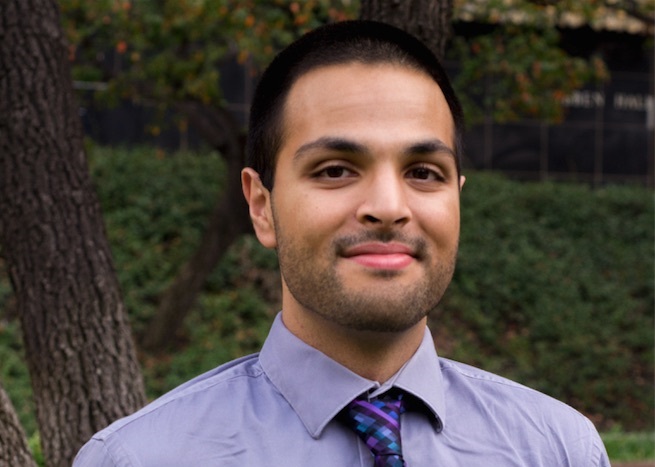Wayne State University freshman medical student Arif Musa’s report on the case of an elderly patient diagnosed with an extremely uncommon upper cervical spine injury highlights the importance of cadaver dissection to medical student learning and its relevance to clinical practice.

The WSU School of Medicine is unique in its emphasis on gross anatomy lab dissection as part of its new Highways to Excellence curriculum.
“In addition to learning about normal structure and function of the human body, students often discover evidence of clinical procedures similar to that described in Arif’s published case report,” said the School of Medicine’s Gross Anatomy Course Director Paul Walker, Ph.D., a professor of Ophthalmology, Visual and Anatomical Sciences. “Cadaver dissection also builds teamwork, self-directed learning, and encourages empathy and respect for future patients, all of which contribute to the professional development of our future physicians. Our students are extremely fortunate that senior leadership supports cadaver dissection as a central element of our medical curriculum and that we have a dedicated staff of experienced gross anatomy faculty to guide students through the dissection process.”
“Traumatic Atlantoaxial Lateral Subluxation with Chronic Type II Odontoid Fracture: A Case Report” was published in the February issue of the International Journal of Spine Surgery. While a graduate student at the University of Southern California's Keck School of Medicine, Musa worked on the research with members of the UC Irvine Medical Center's Department of Orthopaedic Surgery on the publication last summer.
The case of an 87-year-old male who went to the emergency room after a fall had not been previously reported in literature. “However, the processes leading up to this injury – which included multiple falls – represent an extremely common occurrence in the geriatric population due to the aging process. It was decided that atlas-axis fusion with instrumentation was necessary to correct the dislocation and manage the injury,” Musa said. “Another unique aspect of this case was that retro-odontoid pannus tissue developed after the injury. This tissue was at the level of the atlas and axis vertebrae (C1 and C2) and threatened to compress the spinal cord. Interestingly, this pannus tissue resolved spontaneously with correction of the underlying injury (instrumented spinal fusion surgery) and did not require direct intervention.”
In February, as part of the Central Nervous System unit, Musa and his anatomy lab group began a dissection by using a bone saw to remove the upper cranium to reveal the brain.
“In this lab, I had the opportunity to perform a laminectomy of cervical vertebrae C2 and C3. In fact, I was able to perform the exact procedure on the cadaver that was performed on the patient that I wrote about in the case report. This experience has shown me the importance of gross anatomy dissection in modern undergraduate education and illustrates just one way that Wayne State University School of Medicine has devised an updated curriculum that allows students to apply their knowledge at an unprecedented level,” Musa added. “I want to especially thank Dr. Walker and Dennis Goebel, Ph.D., for their excellent teaching efforts and direction, for which I am very grateful.”
First-year medical students like Musa also detailed discussions with WSU Department of Emergency Medicine clinician-educators Sarkis Kouyoumjian, M.D., and Trifun Dimitrijevski, M.D., as take part of the curriculum’s Population, Patient, Physician and Professionalism Course, providing insight into the patient of whom Musa wrote. He and his classmates also learned about the aging process, how it affects quality of life and the role of geriatric falls, during medical student trips to extended care facilities in the Detroit area.
“I would like to thank Jennifer Mendez, Ph.D., director of Community Engagement, for her organization of the extended care facilities trips, which have certainly provided me with a valuable lesson about falls prevention in the elderly,” Musa said.
Musa recently received the Dr. Constantin Cope Medical Student Research Award from the Society of Interventional Radiology Foundation during the Society of Interventional Radiology’s annual scientific meeting, held March 23-28 in Austin, Texas. In 2018, he won a travel award from them to attend the meeting. He is on the board of, and serves as coordinator for, the Radiology and Orthopaedic Surgery interest groups, and is a pre-medical program mentor. He previously published articles about preoperative anxiety in patients, a survey of spine surgeons about treating dural tears, and the use of antiobiotic powders for spinal surgery infections.